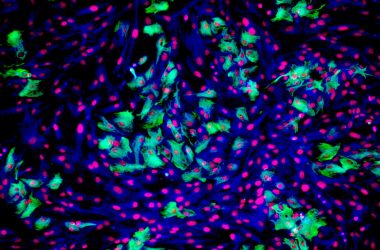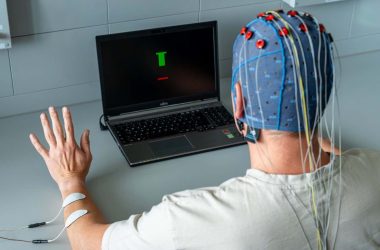Obstructive sleep apnoea, where breathing stops and starts during sleep, could be diagnosed via an AI model
Thinkstock/Getty Images
Obstructive Sleep Apnea (OSA) is a serious medical condition that affects millions of people worldwide. It is characterized by the recurrent partial or complete blockage of the upper airway during sleep, leading to disrupted breathing patterns, loud snoring, and a lack of oxygen intake. OSA has been linked to a range of health issues, including high blood pressure, type 2 diabetes, heart disease, and even daytime fatigue and reduced cognitive function. Until recently, diagnosing OSA required patients to undergo a labor-intensive and invasive test known as polysomnography (PSG), which involves an overnight stay in a specialized sleep laboratory. However, a groundbreaking development in artificial intelligence (AI) promises to revolutionize the way OSA is diagnosed.
Researchers have now harnessed the power of AI to create a model capable of diagnosing OSA with an astonishing accuracy rate of nearly 90%. What makes this achievement even more remarkable is that it relies solely on data from a night-vision camera, potentially eliminating the need for invasive and costly overnight stays in specialized laboratories.
OSA diagnosis has long been a cumbersome process, involving an array of sensors and electrodes attached to a patient while they sleep. These sensors monitor brain activity, eye movement, muscle tone, and other physiological parameters, all of which are used to determine the severity of OSA and formulate treatment plans. While PSG is highly accurate, it is also time-consuming, costly, and inconvenient for patients.
The AI model developed for diagnosing OSA takes a completely different approach. By analyzing the movement and behavior of patients during sleep, as captured by a night-vision camera, the AI system can detect the telltale signs of OSA without the need for sensors or electrodes. The system can identify patterns such as pauses in breathing, snoring, and changes in body position—all of which are indicative of OSA.
To develop this AI model, researchers used a deep learning approach that was trained on a vast dataset of sleep recordings from individuals both with and without OSA. The model learned to distinguish between normal sleep patterns and those indicative of OSA, achieving an impressive accuracy rate of nearly 90%. This level of accuracy rivals the results of PSG while offering a far less intrusive and more accessible method of diagnosis.
The potential impact of this AI-powered diagnostic tool is substantial. It could make OSA diagnosis more convenient and cost-effective, as it eliminates the need for specialized sleep laboratories and reduces the burden on healthcare resources. Patients can now be diagnosed with OSA in the comfort of their own homes, using nothing more than a simple night-vision camera.
Furthermore, the early diagnosis of OSA is crucial for effective management and prevention of associated health problems. With this AI model, individuals at risk for OSA can be identified and treated promptly, potentially reducing the long-term health consequences of the condition.
However, it’s important to note that while this AI model shows great promise, further research and validation are needed before it becomes widely adopted in clinical practice. Additionally, privacy concerns related to the use of night-vision cameras in people’s homes will need to be addressed, ensuring that data security and patient confidentiality are maintained.
In conclusion, the development of an AI model capable of diagnosing OSA with an accuracy rate of nearly 90% using only a night-vision camera is a significant breakthrough in the field of sleep medicine. It has the potential to make OSA diagnosis more accessible, cost-effective, and patient-friendly, while also helping to mitigate the serious health risks associated with the condition. As this technology continues to advance and gain validation, it may transform the way we approach OSA diagnosis and treatment, improving the lives of millions of individuals suffering from this sleep disorder.












